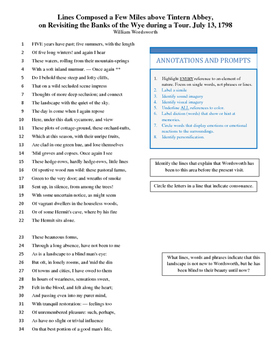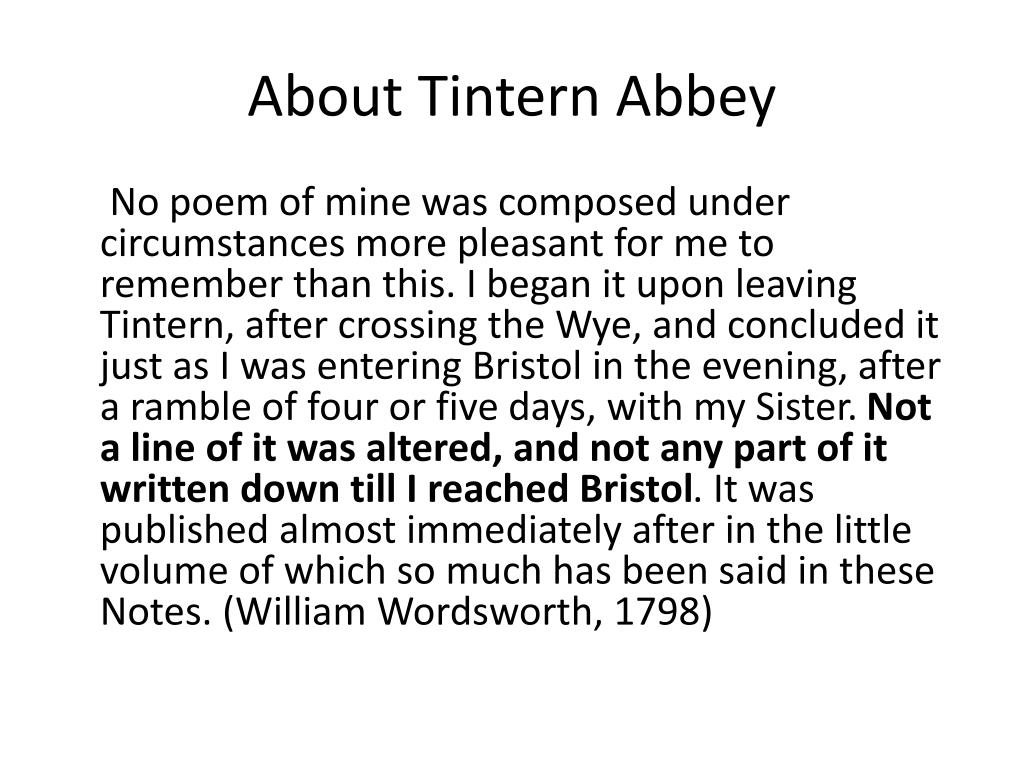

Here it’s worth remembering the significance of the title of the collection to which ‘Lines Written a Few Miles Above Tintern Abbey’ was a last-minute addition: ‘ballads’ are poems which tell a story and have some narrative interest, a quality which ‘Lines Written a Few Miles Above Tintern Abbey’ notably lacks.

The features we now most readily associate with Romantic poetry – the lyric focus on the personal thoughts and feelings of the poet, and the way the individual links with his or her natural surroundings – were brought to new heights in this poem.

‘Lines Written a Few Miles Above Tintern Abbey’ represented a turning-point in Wordsworth’s career, and in the development of English Romanticism. ‘Lines Written a Few Miles Above Tintern Abbey’: analysis He entreats Dorothy to remember this, and to remember their visit to the Wye valley in the years to come.
Tintern abbey wordsworth analysis full#
Wordsworth goes on to say that Nature – personified as female, as so often in poetry – is full of ‘blessings’, no matter what life may bring. Because they’re brother and sister and have spent their lives together, looking at Dorothy reminds Wordsworth of the boy he was: she is a short-cut back to his childhood. In the poem’s final verse paragraph, Wordsworth addresses his companion with him by the banks of the river Wye: his sister, Dorothy. My dear, dear Sister! and this prayer I make, My former pleasures in the shooting lights The language of my former heart, and read My dear, dear Friend and in thy voice I catch Of this fair river thou my dearest Friend, If I were not thus taught, should I the more


 0 kommentar(er)
0 kommentar(er)
